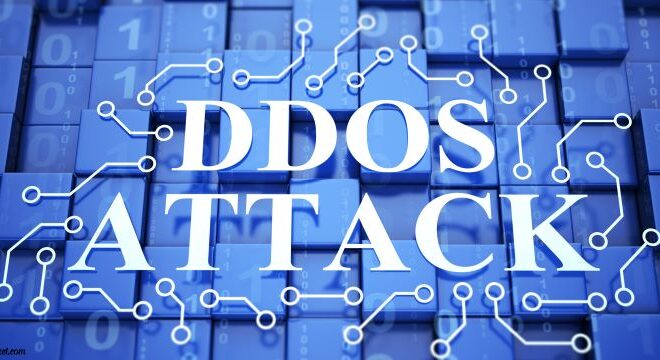
Embracing Technology in Senior Living: A Guide to Improving Residents’ Lives
Key Takeaways
- Recognizing how seniors’ living facilities may improve their resident experience with technology.
- Exploring various technological solutions that can be implemented to improve the quality of life.
- Recognizing the challenges and benefits of adapting to technology in senior care environments.
Table of Contents
- The Role of Technology in Senior Care
- Improving Quality of Life with Technological Advancements
- Tech Trends in Senior Living
- Overcoming Barriers to Technological Adoption
- Data and Personalization in Care
- Ensuring Data Security and Privacy
- Adoption Strategies for Senior Living Providers
With an aging population that’s growing at an unprecedented rate, it has never been more crucial to integrate technology into senior care. Adopting senior living technology solutions transforms facilities into advanced havens that focus on health, safety, social interaction, and personal freedom. These tools and systems are not just auxiliary but fundamental to creating a senior care environment tuned to the evolving needs and preferences of today’s elderly population.
Rapid technological advancements are profoundly impacting the healthcare and elder living industries. Using technology to improve their everyday lives, older individuals are embracing it more and more. There are several advantages to using technology in senior living communities, including better care and increased well-being for residents. In recent years, there has been a notable surge in the use of technology among older persons.
The Role of Technology in Senior Care
Technology’s infiltration into the senior care sector radically alters traditional caregiving approaches. From advanced medical monitoring equipment that enables early detection of health issues to communication platforms that keep residents connected with the world, these technological interventions are essential to building a dynamic, responsive environment. The implementation of these tools aids in creating spaces that are not only safe and operative but also nurturing and welcoming, thereby improving the living experience for seniors in a multitude of substantial ways.
Improving Quality of Life with Technological Advancements
Truly transformative technologies within senior living directly improve the residents’ quality of life. Personal emergency response systems and other technologies can increase people’s sense of security by guaranteeing fast assistance in the event of a fall or other medical emergency. Meanwhile, innovations like robotic pets or smart devices that facilitate video calls with family members provide emotional comfort and continue to challenge the stereotypical notions of isolation in eldercare.
Sophisticated VR therapies offer immersive experiences that can help manage conditions like dementia and chronic pain. Meanwhile, interactive gaming systems can foster both physical activity and social interaction. The diverse spectrum of technological interventions underscores just how much potential there is in enhancing the lives of the senior community. The implications of these advancements are abundantly clear — when integrated thoughtfully, technology can deeply enrich the twilight years of an individual’s life. A comprehensive look at the benefits of health technologies for seniors is available on the World Health Organization’s website for further insights.
Tech Trends in Senior Living
Senior living facilities that wish to offer the most excellent care and lifestyle alternatives must stay current on the newest technological advances. Smart home elements like automated blinds, voice-activated devices, and wearable fitness trackers are not just about trends; they’re about creating intuitive environments that adapt to the needs of their inhabitants. Telemedicine capabilities are removing geographical obstacles to healthcare access, and advanced AI systems may now be used to coach people through exercises or to watch them. Such trends indicate a shift towards a more resident-centric approach to care, aided substantially by the latest technological advancements.
Overcoming Barriers to Technological Adoption
However, the journey toward technological incorporation in senior living is full of challenges. Some residents may view new gadgets with skepticism or anxiety, a natural response to unfamiliarity. Educating and training older people and the staff assisting them can dispel myths and ease fears. Furthermore, financial limitations can hinder the adoption of cutting-edge technologies within facilities. But overcoming these obstacles is not insurmountable. Phased implementation plans, grants, and strategic partnerships can facilitate transitioning to a more modernized care setting.
Data and Personalization in Care
The intersection of data analytics and personalized care represents another frontier for eldercare technology. Care providers can deliver a highly individualized care regimen by leveraging resident data — from daily activity levels to more intricate health metrics. It can enhance the effectiveness of care plans and give residents a greater sense of self-direction. As senior living facilities seek to become more resident-oriented, the meticulous application of data for personalization is bound to play a pivotal role.
Ensuring Data Security and Privacy
As technology becomes ever more ingrained in the fabric of senior care, the security and privacy of resident data are increasingly important. Care providers must employ state-of-the-art cybersecurity protocols to protect against data breaches, which could have dire consequences. This concern is particularly salient in senior care, where the ethical dimensions of technology use are constantly under scrutiny. A closer look at the moral implications of AI use in elderly care provides a nuanced perspective and is a critical read for those involved in the field. Insights can be gained from resources such as the discussion on ethical considerations of AI in elderly care.
Adoption Strategies for Senior Living Providers
Implementing a technological overhaul within a senior living setting is a process that necessitates a thoughtful approach. Encouraging resident participation in selecting tech offerings can greatly enhance receptivity and ease adoption woes. Comprehensive training initiatives — for residents and caregivers — ensure everyone is on the same page about usage. Finally, establishing a culture of support and patience within the facility can mitigate challenges. With these practices in place, blending technology into senior living can be a harmonious and beneficial transition for all involved.



